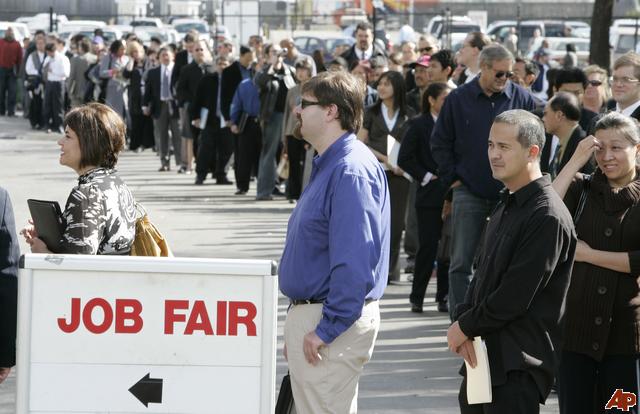30 Million Unemployed Go Missing And with Them USD14bn of Monthly Consumption

An unprecedented rise in the inactive population since February has seen more than 30 million workers going missing out on from official joblessness stats throughout the chosen OECD and Emerging Market economies. Due to the fact that of this” concealed joblessness,” the real month-to-month hit to household consumption might be ignored by USD14bn, according to Euler Hermes, among the worldwide leaders in trade credit insurance.
Only the tip of the iceberg: Up previously labor markets across many countries have proven far more resilient than a financial activity – at least on the surface area that is. Based on the long-run relation between GDP development and changes in the unemployment rate, the real Covid-19-related labor market impact in some nations should be much direr than what heading indicators suggest. In fact, joblessness rates must be 3-5pp greater in France, Italy, Spain, and the UK and 10pp in South Africa. The U.S. stands out in our sample as the only country for which the joblessness rate is greater than historical relations with GDP growth would suggest.
Scratching a bit below the surface area of headline labor market indications, we find that more than 30 million employees have gone missing out on from official stats across twenty-five OECD and selected Emerging Market economies. This “surprise unemployment” is concealing the real degree of labor market pain. According to our computations, the variety of unemployed that have gone missing out on from official data since February 2020 ranges from 320,000 in France, 350,000 in Italy, 160,000 in Ireland and 1.5 mn in Spain, to 5.5 million in the U.S. all the method to 13 million in Brazil. The sharp drop in the active population is without current precedent
“As far as developed markets are concerned, this does not come as a huge surprise, considering that employment in lots of economies –– the U.S. is clearly an outliner –– has been protected by furlough schemes.
Beyond discouraged-worker impacts, this sharp increase in inactivity can to a large level be described by special functions related to the Covid-19 economic downturn, including extreme constraints on movement, the unavailability of government services, as well as job seekers, avoided actively trying to find work due to caring obligations for kids in the middle of widespread school closures.
We recalculate joblessness rates by adding back modifications in the inactive population given that February both to the numerator (the unemployed) and to the denominator (the active population). We find that “surprise unemployment” throughout significant industrialized economies would raise the unemployment rate by around 6pp in Ireland and Spain, 3pp in the U.S., and about 1pp in Italy, Canada and Portugal (see Figure 3). As in most nations, Covid-19 restrictions were eased substantially over the summer season, while schools resumed in most countries by September, we anticipate this “concealed unemployment” to gradually discover its way back into the heading unemployment rate.

“The rise in Emerging Market joblessness rates mostly downplays the damage Coviactually done to the labor market: 13mn people have exited the manpower in Brazil since February, 5.2 mn in South Africa, 1.8 mn in Chile, 1.6 mn in Colombia, and 1.2 mn in Turkey. This causes unemployment being undervalued by 10.4 pp in Brazil, 16.7 pp in South Africa, 15.8 pp in Chile, 5.3 pp in Colombia, and 3.2 pp in Turkey. “Surprise unemployment” tends to be a bigger problem in many Emerging Markets for two factors: (i) weaker job defense and fewer ad hoc employment assistance during the crisis compared to established economies and (ii) a higher tendency to move to towards informal work, which does not appear in main stats.” What does this mean for businesses and consumers?
Healing prospects for worldwide customers are likely to be overstated. Undoubtedly we approximate that for each extra month that the covert out of work stays out of the workforce, global private usage incurs a “surprise” loss of USD14bn (0.3% of regular monthly GDP) due to foregone “social costs” and investing in sectors that normally suffer during a slump. The longer the newly non-active population remains out of the manpower, the stronger the “surprise” hit to intake sectors that are particularly conscious of a Covid-19 economic downturn. In addition to those sectors that suffer amid a financial downturn (furnishings, clothes & & footwear), “social spending” (transport, recreation, and culture, dining establishments and hotels) will be particularly affected. In contrast to basic intake products that are not likely to be as severely affected (food, lease, energy) by their very nature, and thanks to the short-term emergency assistance from the federal government, “social spending” parts are the very first intake products to be cut when times get hard.
They need to hence continue to be adversely impacted by concealed unemployment. Social costs’ share of overall intake ranges from 33% to 48% throughout our panel of twenty-five countries, representing two-thirds of GDP. After estimating the average disposable earnings utilized for intake (i.e. deducting savings) we use such share to the overall. This yields an outcome of around USD14bn of “social spending” and recession-sensitive consumption threatened each month that hidden unemployment remains at high levels, or 0.3% of month-to-month worldwide GDP.
“While we expect that the continued economic healing could bring part of the inactive population back to the workforce, pressing official joblessness rates higher, renewed targeted lockdowns might likewise mark a new increase in “covert joblessness” in some sectors. That is why addressing the dissuaded workers problem and supplying solutions for those unable to work due to Covid-19 specific constraints (school closures, specific lockdown for hospitality and restaurants) remains essential, even if the peak of the Great Lockdown crisis is behind us”, the company predicted.






